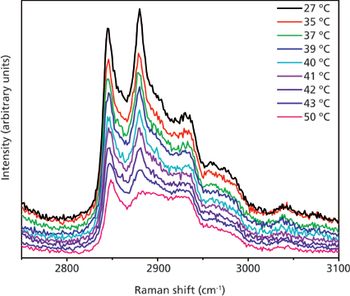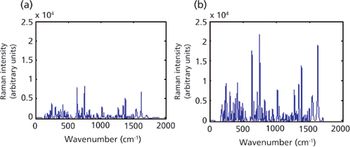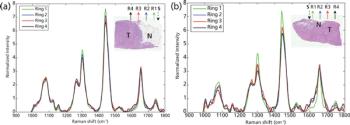
Special Issues
Raman spectroscopy (weak H2O Raman scattering) has been a tool of choice for investigating aqueous lipid suspensions. Recently, there has been interest in supported lipid bilayers (SLBs), where lipids are believed to have fluidities similar to those of free vesicles, and thus have been investigated for applications such as sensors and drug delivery vehicles. Here, Raman spectra of two lipid SLBs on SiO2 nanoparticles were obtained. With decreasing nanoparticle size, or for the same nanoparticle size and longer alkyl chain length, the lipids became increasingly interdigitated compared with the normal bilayer structure.


